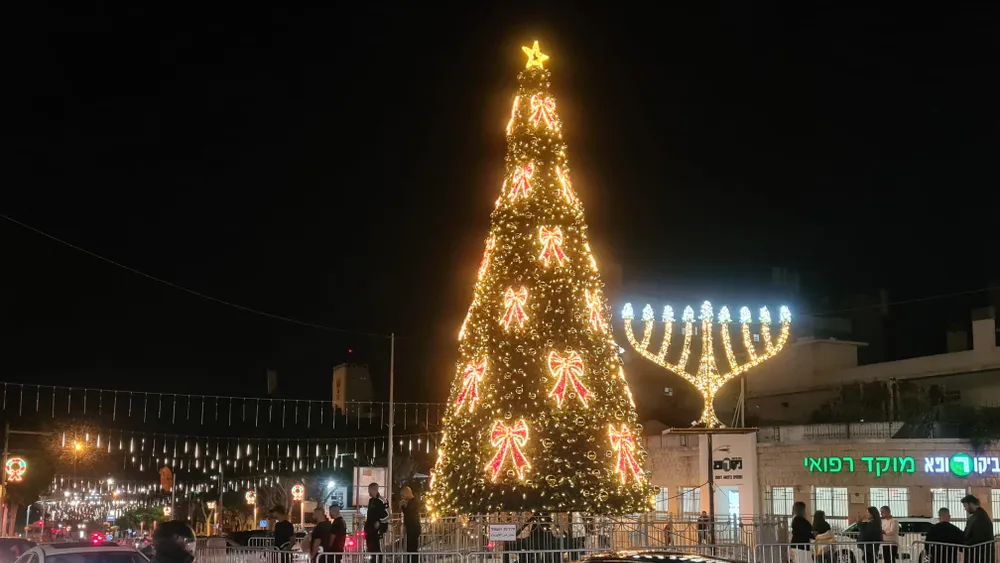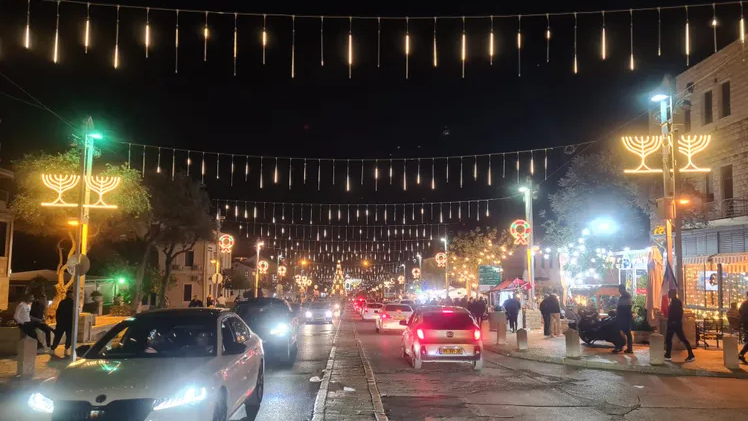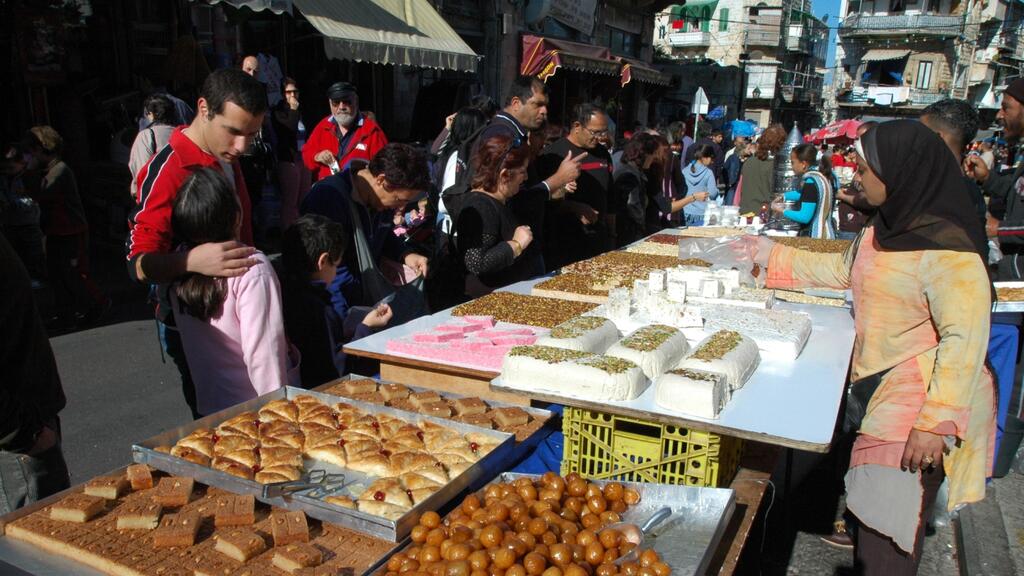Like every year, Haifa, the "northern capital" of Israel, known for the cohabitation between its Jewish and Arab residents, celebrates in a unique atmosphere the Christmas and Hanukkah holidays during the Hag HaHagim festival ("The Holiday of the Holidays" in Hebrew), which takes place this year from December 8 to 25.
Many attractions are offered to hundreds of thousands of visitors at different locations in the city in an atmosphere that mixes the scent of the east and the tradition of Santa Claus.
3 View gallery


A Christmas tree next to a Hanukkah candlestick in Haifa, Israel, during the Hag HaHagim festival
(Photo: Jérémie Elfassy)
During walks in the market of the Arab quarter of Wadi Nisnas, where many churches are nestled, in the German Colony and along Ben Gurion Avenue which extends the famous Bahai Gardens, it is not uncommon to see groups of young Israeli Arabs dressed as Santa Claus and dancing in groups to eastern music with contagious joy.
"For us, Christmas is a way to commune and celebrate with all the inhabitants of the city. Everyone is welcome here. That way, tourists can see how we Arabs know how to party," explains Saber, a young man who works in the Wadi Nisnas market.
In addition to the large Christian Arab community in the city, many Jews from the former USSR grew up with a conception of Christmas that was not Christian, but secular, considering the celebrations above all a "national holiday."
Highlight Haifa's cultural diversity
Strengthened by the religious mix that characterizes Haifa, it is only natural that the "Hag HaHagim" festival was inaugurated there 29 years ago, on the initiative of the Arab-Jewish Cultural Center - Beit Hagefen.
The institution, located in the district of Wadi Nisnas, and which was founded in 1963, is a pioneer in the field of intercultural dialogue. The activities of Beit Hagefen are based on the belief that "interpersonal knowledge and encounter with another culture, its histories, its cultural and spiritual assets, are important to break down barriers and establish trust between different nationalities, ethnic groups and religious beliefs in Haifa and in Israel."
Like every year, the "Hag HaHagim" festival offers visitors concerts, lectures, art exhibitions, workshops and performances for children, which emphasize the cultural diversity of Haifa, while Ben Gurion Avenue hosts a Christmas market, adorned with twinkling lights and decorations, which has nothing to envy to those which flourish in Europe at this time of the year.
3 View gallery


Ben Gurion Avenue in Haifa illuminated by the lights of the Hag HaHagim festival
(Photo: Jérémie Elfassy)
Thousands of Israelis flock from all over the country every year to stroll the streets of the German Colony, and enjoy the festive and unorthodox atmosphere. "We come every year. We're neither Arabs nor Christians. But here we party the way we like, and you don't see that anywhere else in Israel. And probably nowhere else in the world," said Kobi, who came with his wife and four children.
Hanukkah will be honored from Sunday with a daily lighting of candles, as is the tradition, on a Jewish candlestick placed near the imposing Christmas tree which overlooks the bottom of Ben Gurion Avenue. But the highlight of the festival will take place on Saturday, December 23, two days before Christmas with the traditional parade of Haifa scouts and their orchestra, from "Santa's house" to the big Christmas tree in the German Colony.
The parade will be followed by a majestic fireworks display that will seem strangely small if you come to observe it from the Louis Promenade, on Mount Carmel. Under these lights, there is a diverse population, sometimes in conflict, but united for a few hours, in front of the charm and good nature of Santa Claus.


